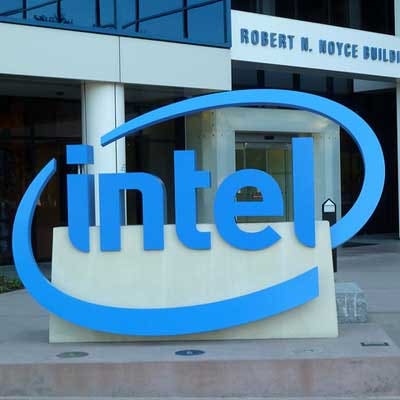Intel's AMD Talent Raid Raises Partner Buzz Around GPU Blitz

Intel partners said the company's hiring of senior AMD talent is a promising sign for its plan to take on AMD and Nvidia with a line of dedicated graphics processors.
The Santa Clara, Calif.-based company has made big hires in the past year that are boosting its graphics processing unit efforts. That includes Raja Koduri, AMD's former chief GPU architect who is now leading Intel's Core and Visual Computing Group; former AMD graphics marketing head Chris Hook; AMD chip design veteran Jim Keller; Intel and, most recently, former AMD senior director of platform engineering Joseph Facca, who started last week, according to a source familiar with Intel's plans.
"This is the start of something exhilarating!" Facca wrote in a June 23 LinkedIn post.
Intel also brought back Tom Forsyth, who was one of the key architects behind Intel's previous attempt at a dedicated GPU and is now working with Koduri in the Core and Visual Computing Group.
The moves are significant because, up until now, Intel has mainly focused on integrated graphics solutions in its main line of CPUs following the company's failed dedicated GPU efforts with the Intel i740 in the late 1990's and the aborted Larrabee GPU project in 2013.
"I think that Intel’s recent hires in the GPU space show that they are serious and committed to a competitive product offering in that arena," Andrew Kretzer, director of sales and marketing at Bold Data Technology, a Fremont, Calif.-based custom system builder, said in an email.
That view is shared by Randy Copeland, CEO of Velocity Micro, a Richmond, Va.-based system builder that focuses on both the enthusiast and workstation markets for PCs.
"Clearly, Intel is hiring some quality people. I personally know some of these guys, and they are brilliant and passionate people that are absolutely up to the challenge," he said in an email. "People alone don't make a product great, but combined with Intel's financial and intellectual muscle, I would fully expect to see some competitive products on the horizon."
Intel confirmed last month that it will release its first GPU in 2020 as part of a set of "high-end discrete graphics solutions for a broad range of computing segments," including gaming, data center, professional workstation and artificial intelligence. These segments will also include entry-level, mid-range and high-end products, according to the source familiar with Intel's plans.
"[Intel is] really trying to come in and ultimately play in the entire spectrum," said the source, who spoke to CRN on the condition of anonymity because the person isn't authorized to speak to the press.
Intel, which has traditionally relied on channel partners as part of its go-to-market efforts, will continue that same strategy, though specific plans haven't been devised yet, according to the source.
"The channel is going to be incredibly important in how we come to market," the source said.
An Intel spokesperson declined to comment and pointed to previous statements the company has made.
Intel partners agree that the channel is the right way to go.
"I think it’s a good opportunity in the channel," said Kent Tibbils, vice president of marketing of Fremont, Calif.-based distributor ASI Corp. "It's a huge category for ASI and most of our resellers," he added.
Copeland at Velocity Micro said the channel will be integral.
"The channel is the only sensible launch avenue for this type of all new product, because we can do our validation and launch integration in months instead of years," he said. " It's not unusual for us to see the very earliest prototypes long before the [multinational corporation] players, because we are so much more nimble and serve the pointy end of the market most effectively."
Wallace Santos, CEO of Maingear, a Kenilworth, N.J.-based system builder, put it more bluntly: "If the channel's not adopting a new GPU, it will fail."
While Intel has made a spate of big AMD hires in the past year, the company recently lost an executive within its Core and Visual Computing Group, Martin Ashton, who joined AMD this month as a corporate vice president. Ashton joined Intel in November 2016, roughly a year before Koduri came to lead the group in a role that put him higher up the leadership chain.
As the leader of the Core and Visual Computing Group, Koduri's responsibilities extend beyond the company's work on dedicated, or discrete, graphics cards. In addition, he is in charge of the architecture, design and development of the company's CPU and GPU core technologies.
According to the source familiar with Intel's plans, Koduri is also heading up Intel's software efforts, which includes tools, software developer kits and APIs, as well as the management of Intel's developer ecosystem. This includes "differentiated IP across computing, graphics, media, imaging and machine intelligence capabilities for the client and data center segments, artificial intelligence, and emerging opportunities like edge computing," according to Koduri's biography on Intel's website.
Santos at Maingear said Intel can stand out in the graphics competition by making GPU products that provide extra benefits when used with other Intel products, such as CPUs and memory.
With Koduri leading Intel's CPU and GPU efforts, he could help make such a big ecosystem play possible.
"When it works with their own platform, it should shine," Santos said, though he added it will be important that Intel GPUs work well with other hardware ecosystems as well. "People love ecosystems, and it's great to have an ecosystem that’s compatible with other ecosystems."